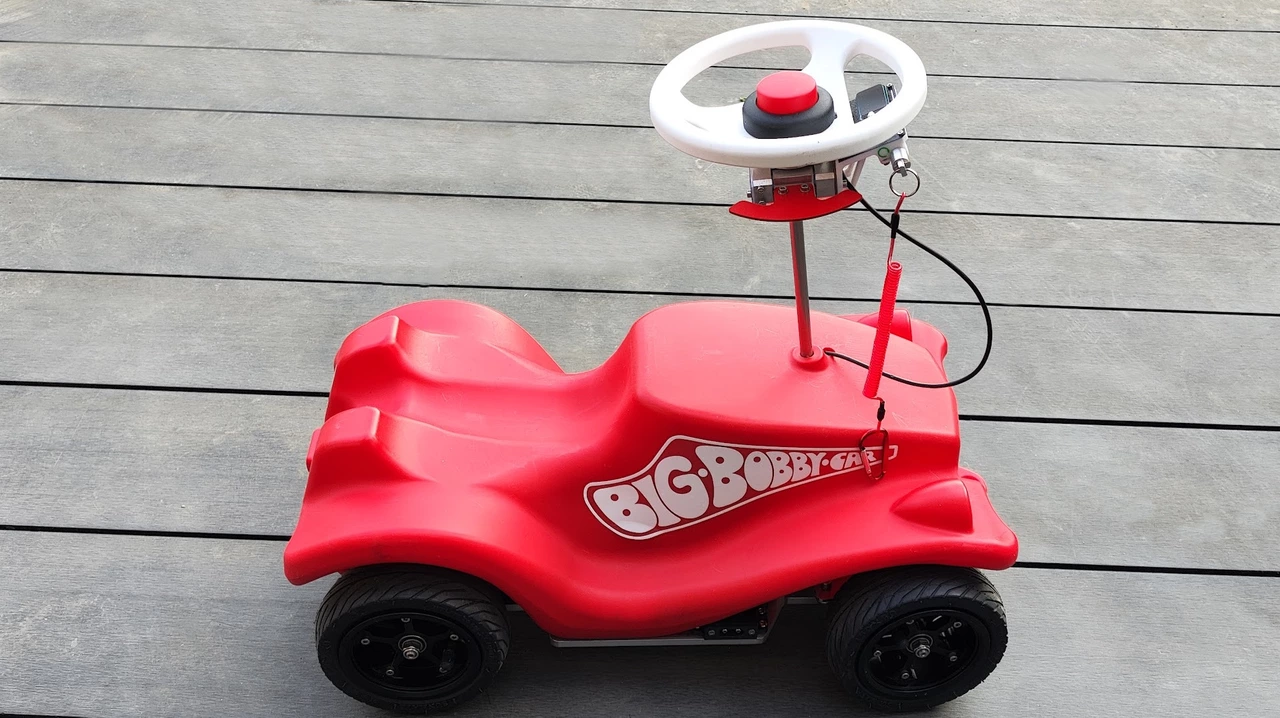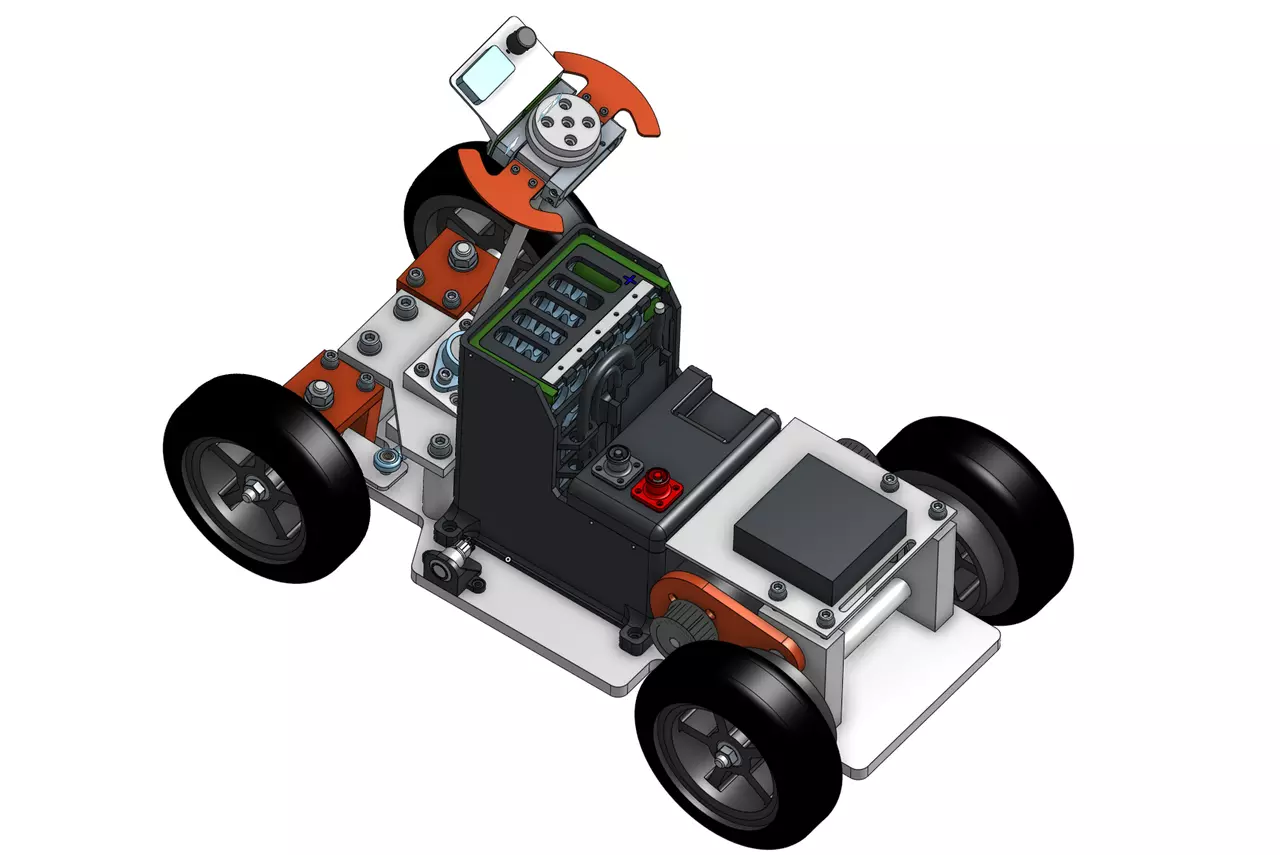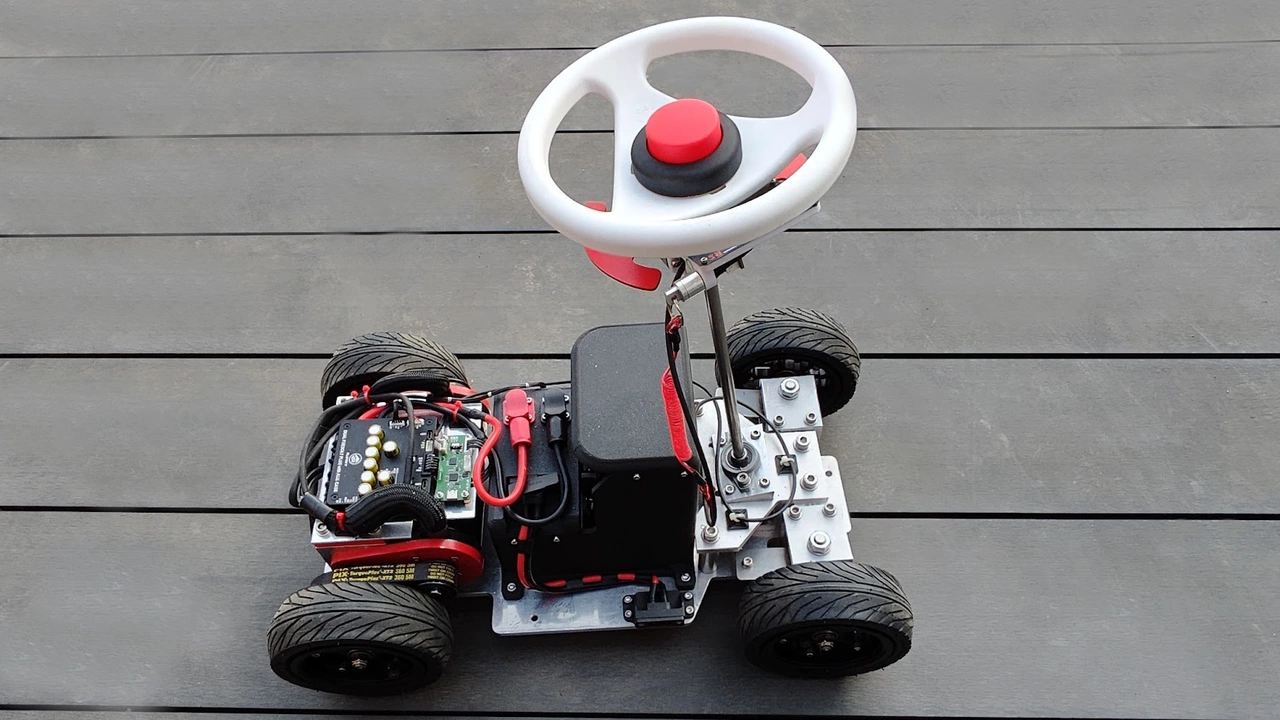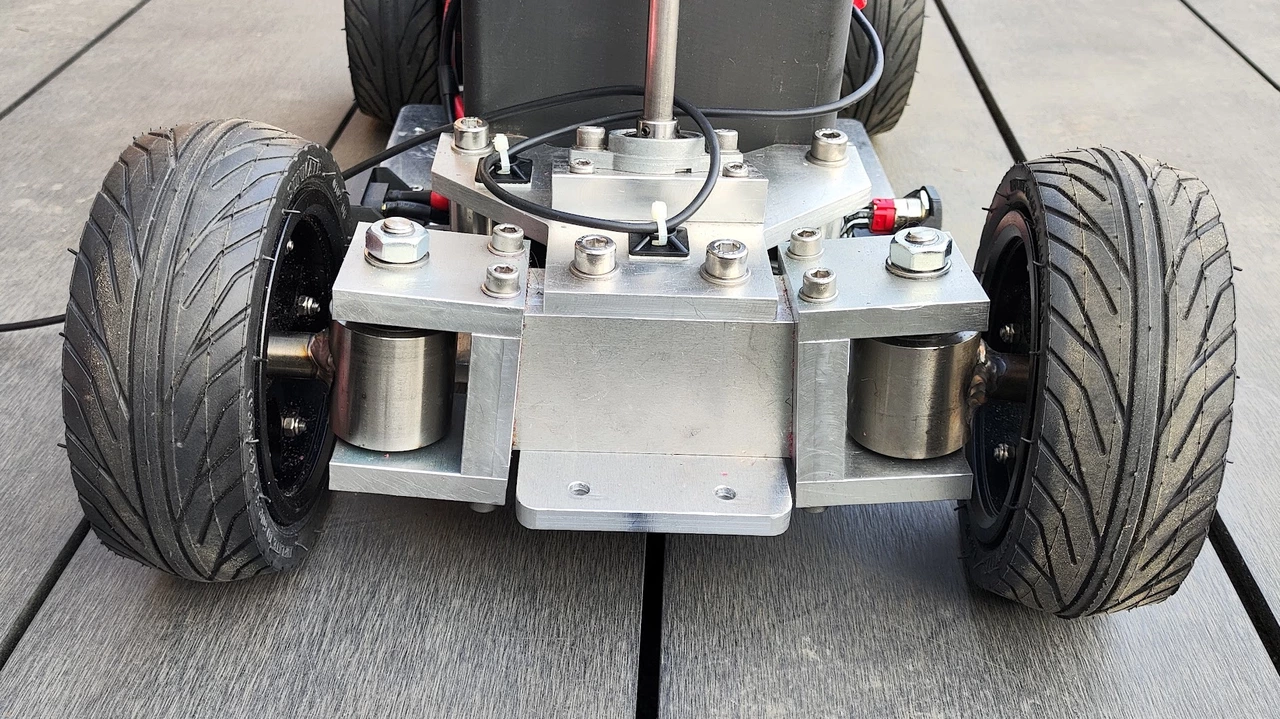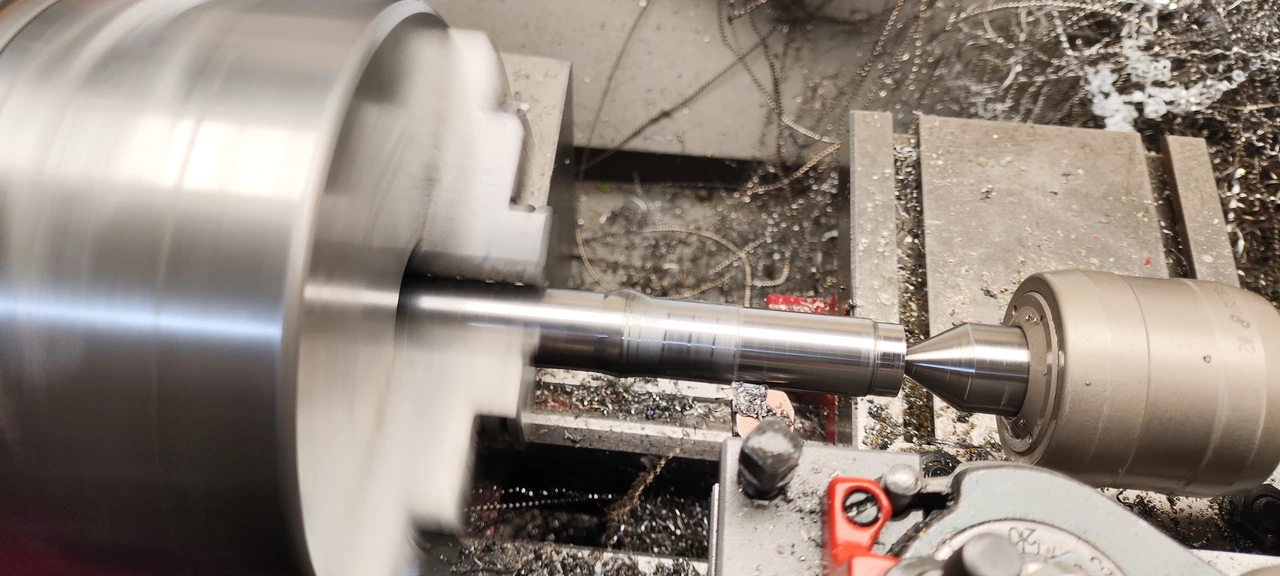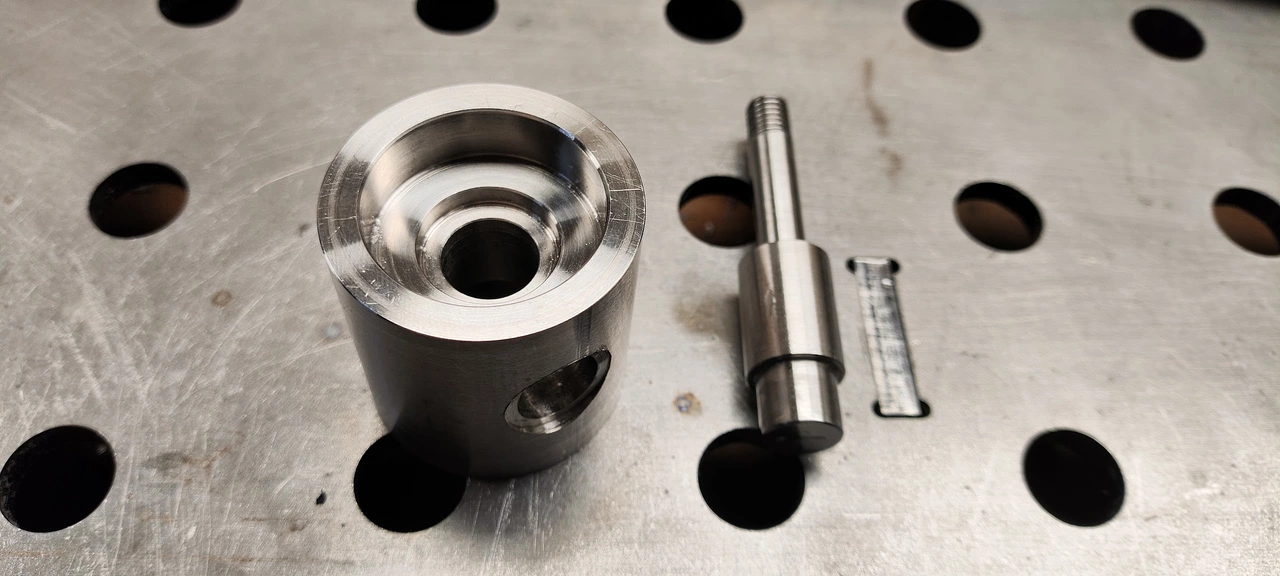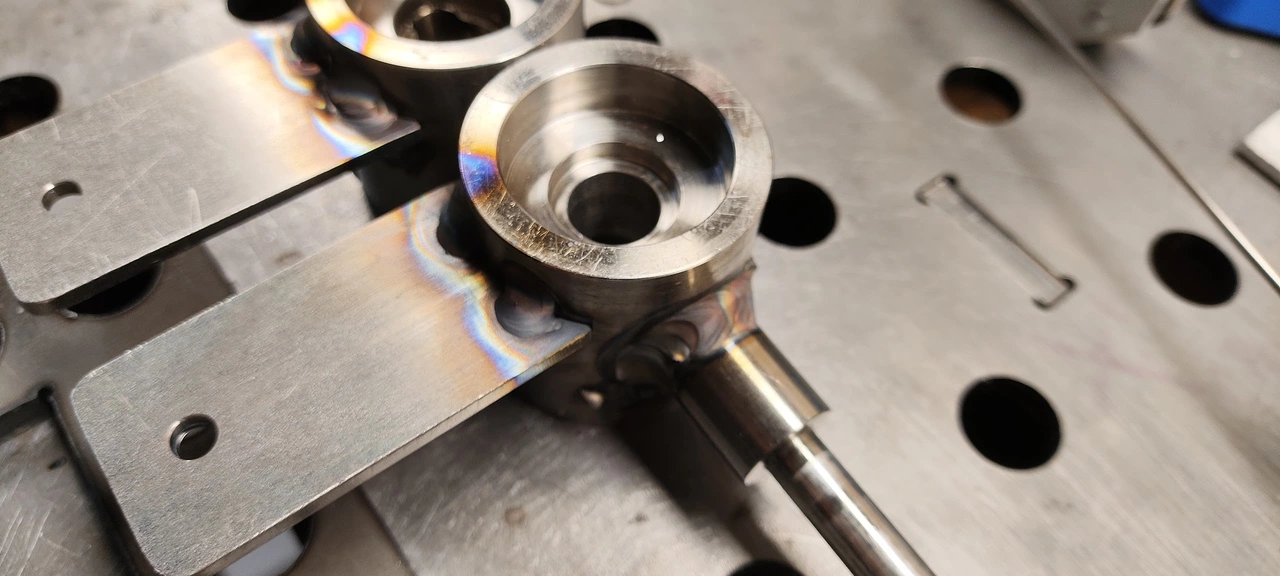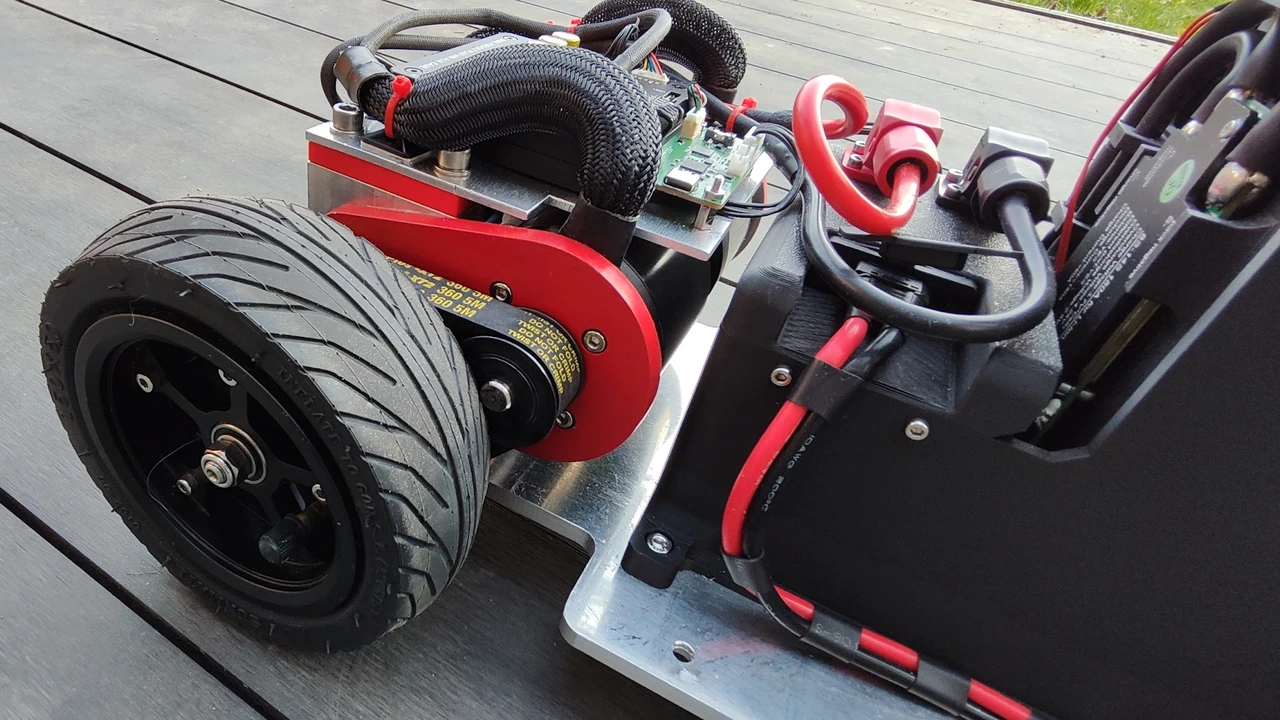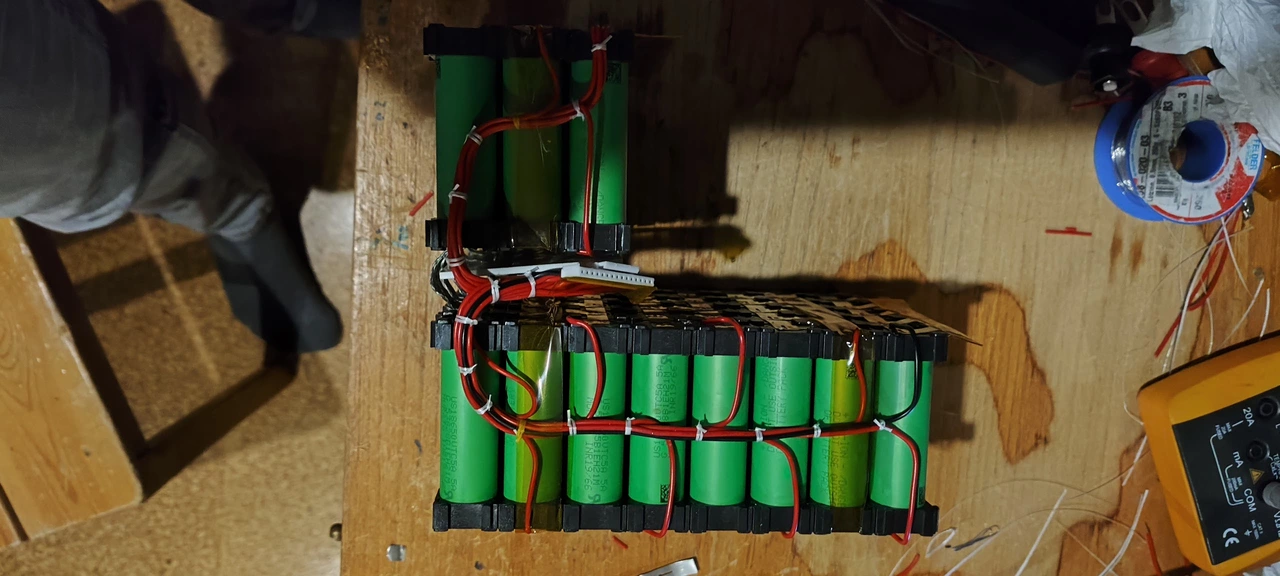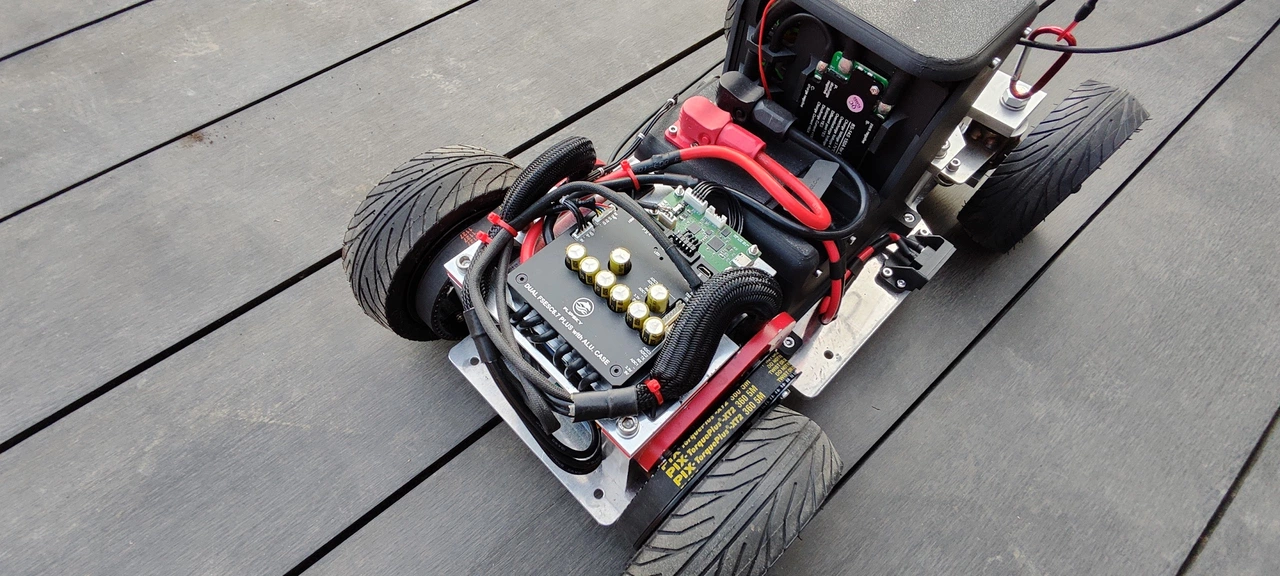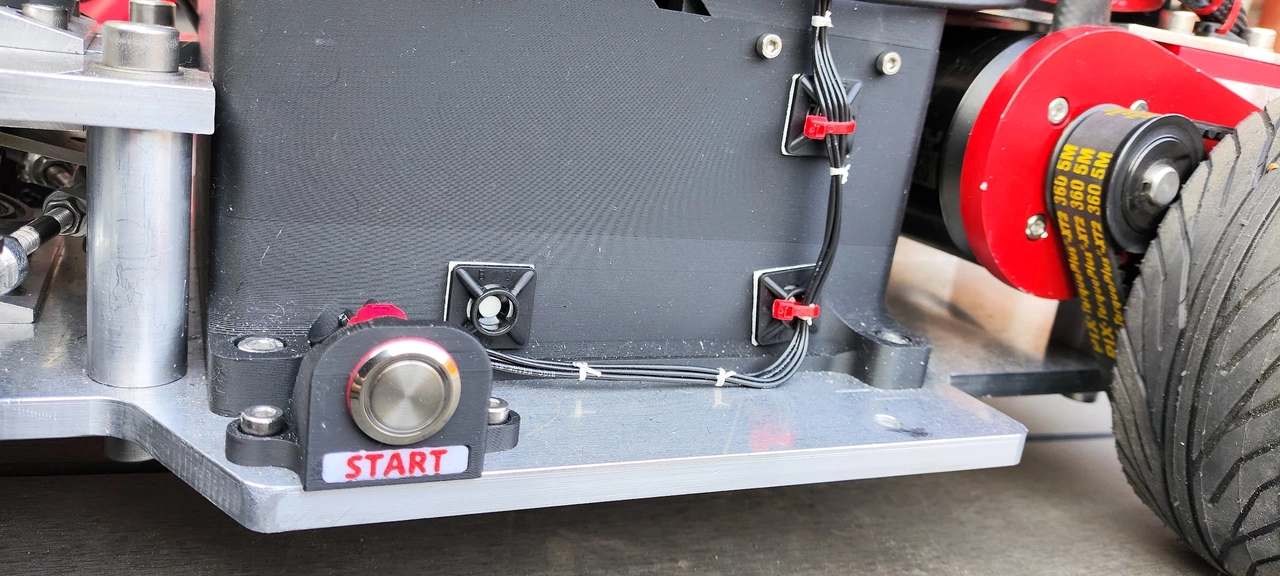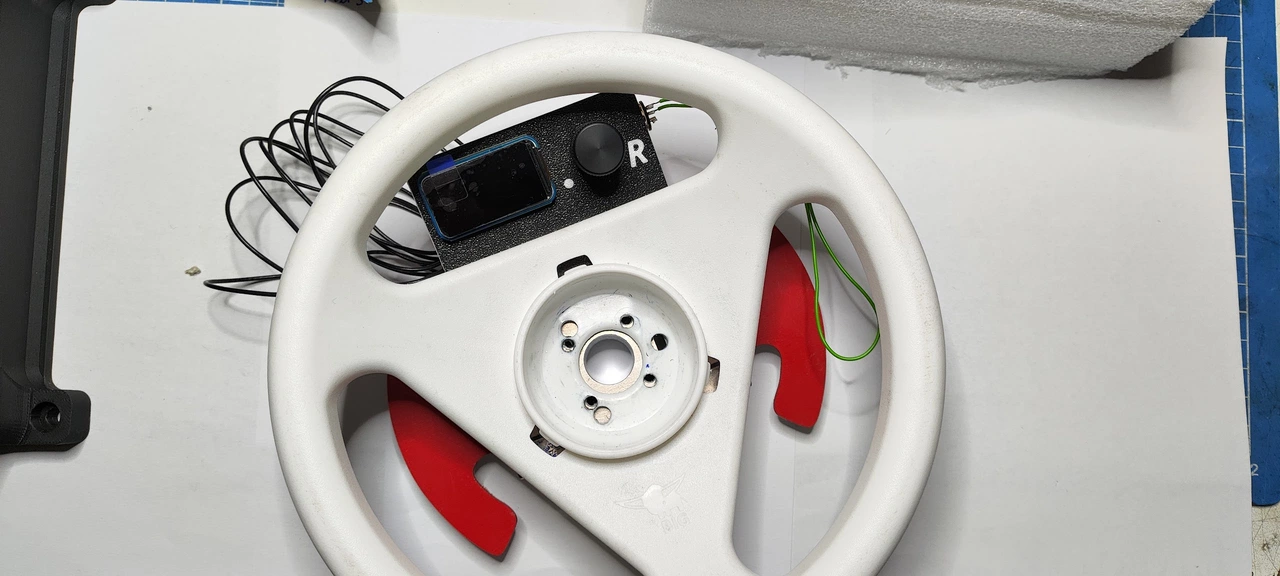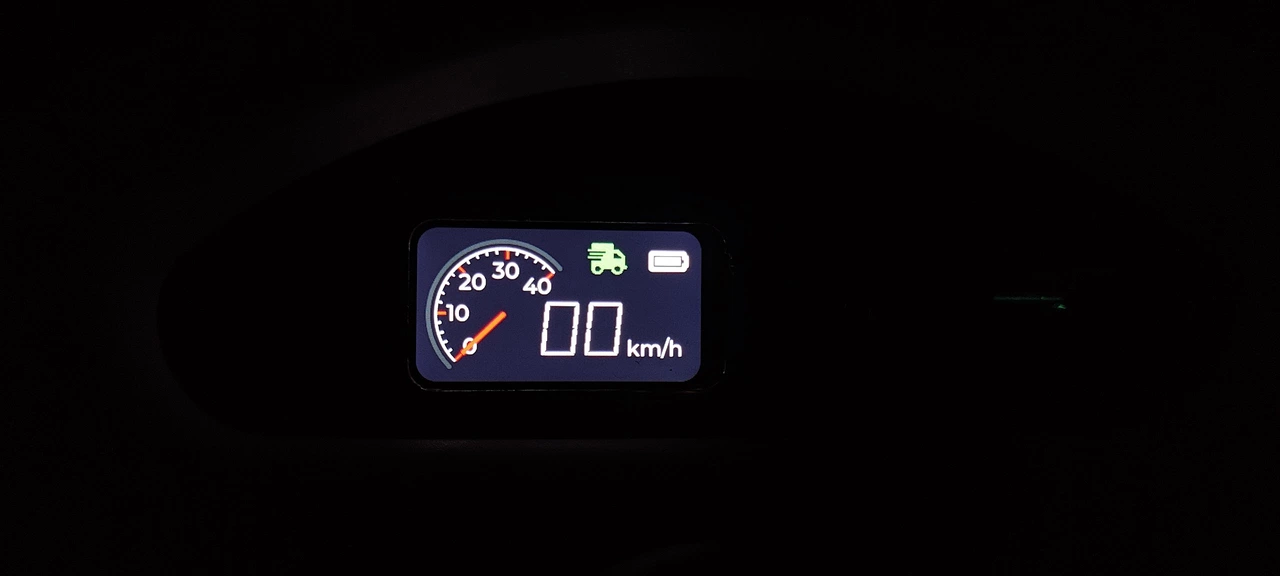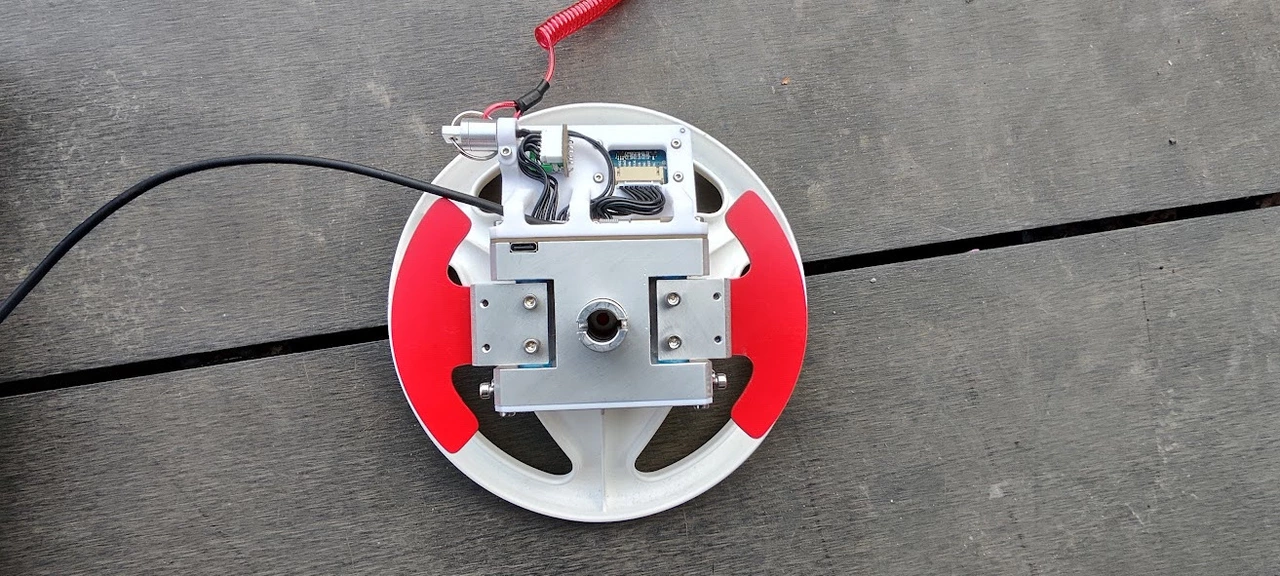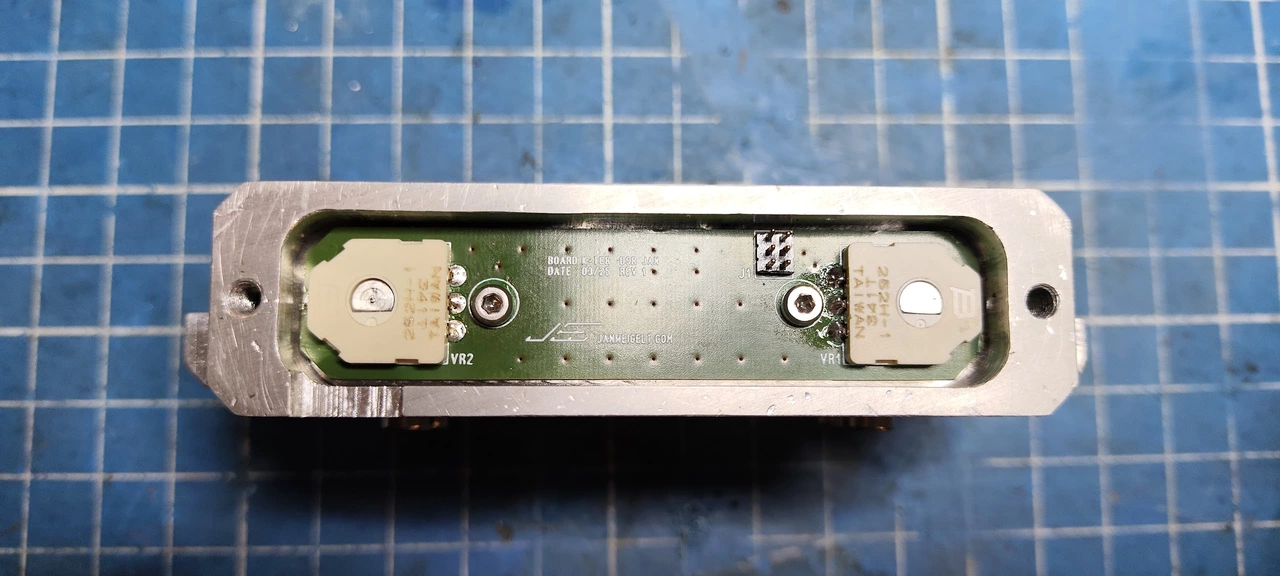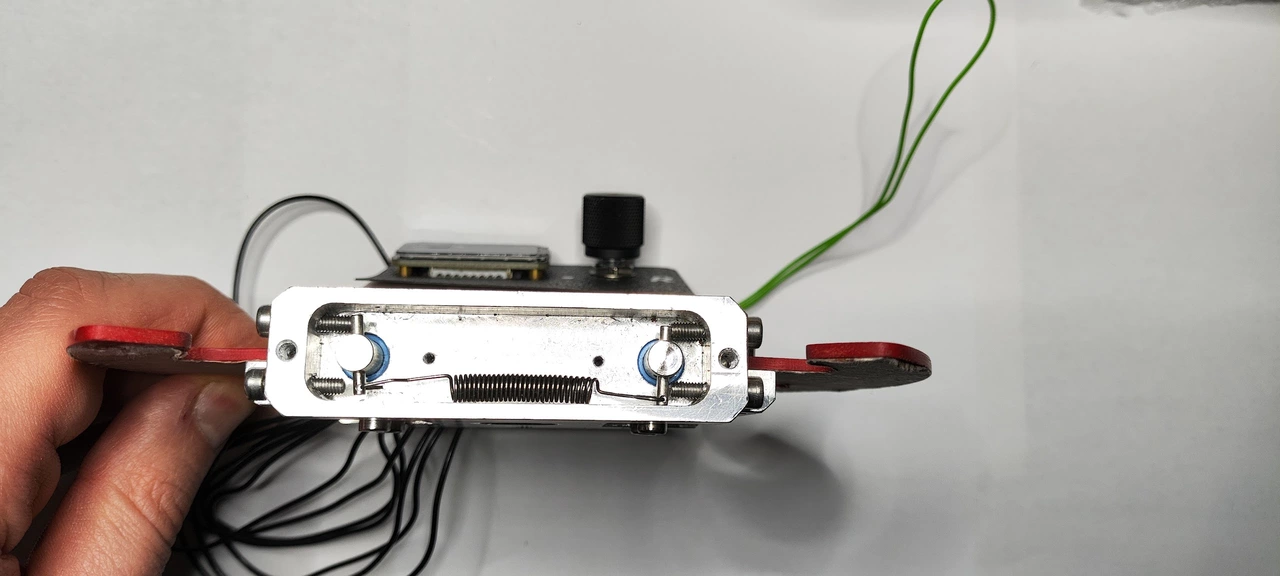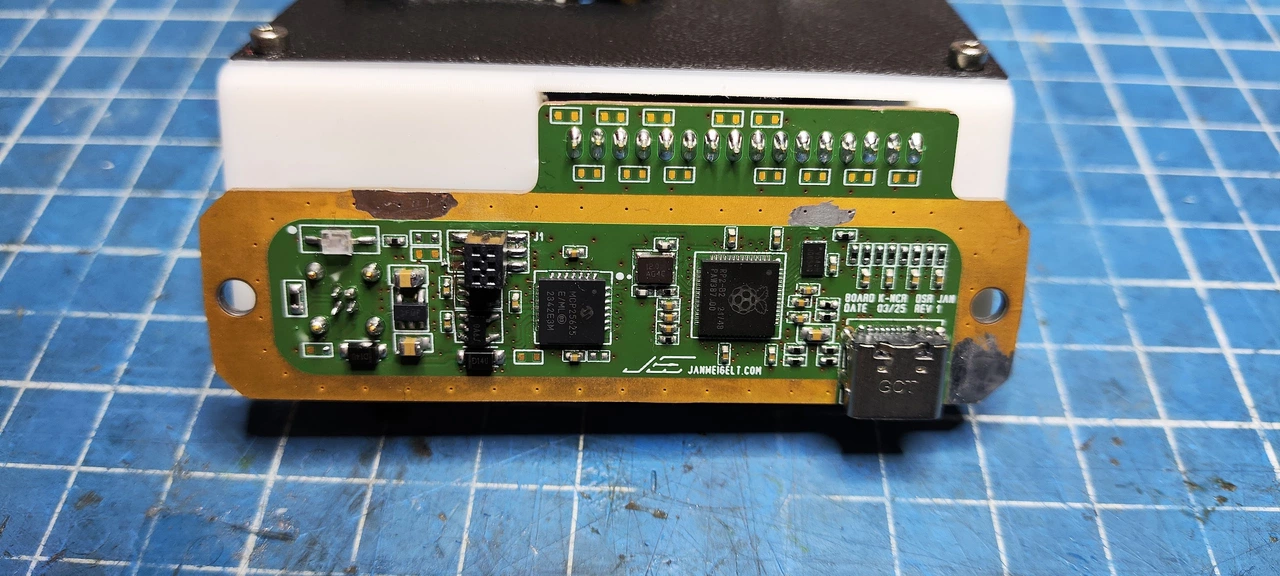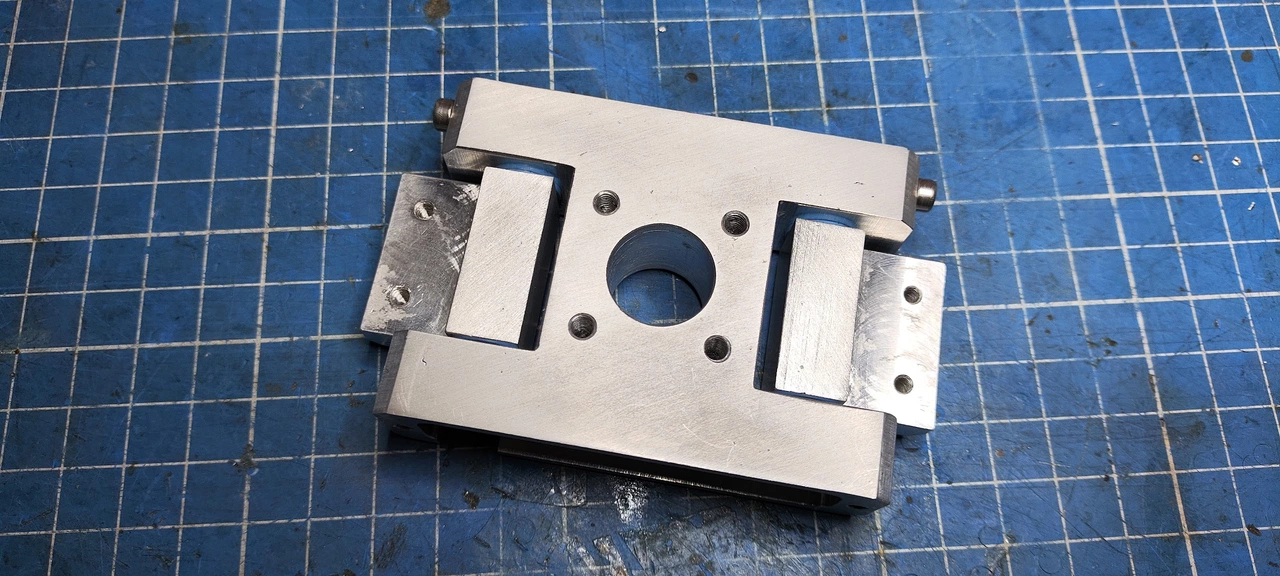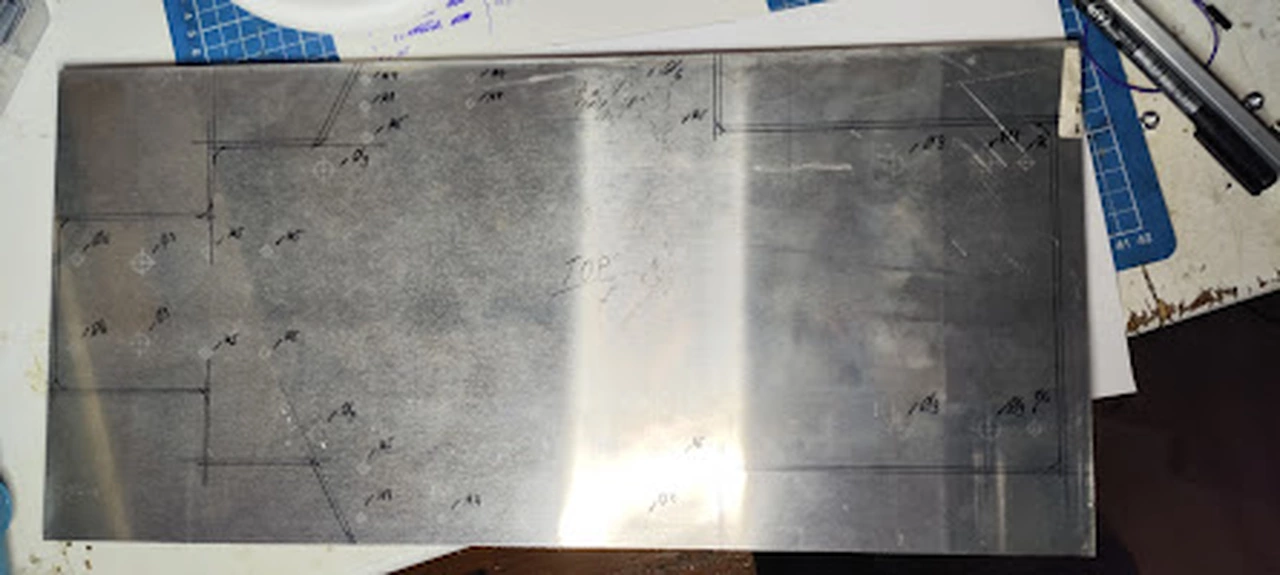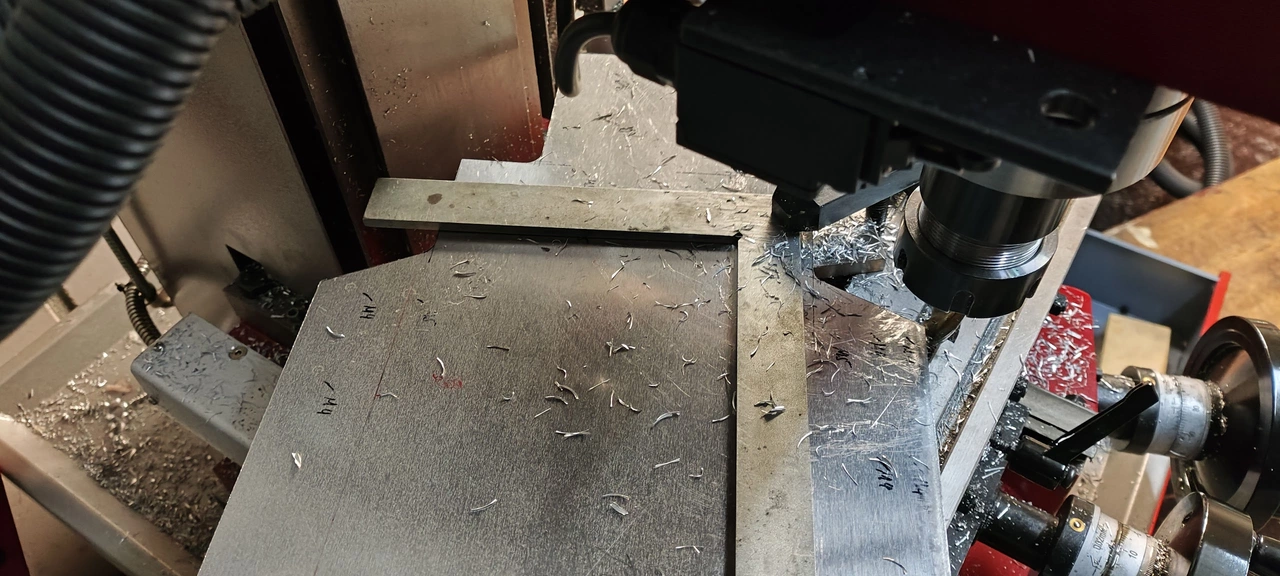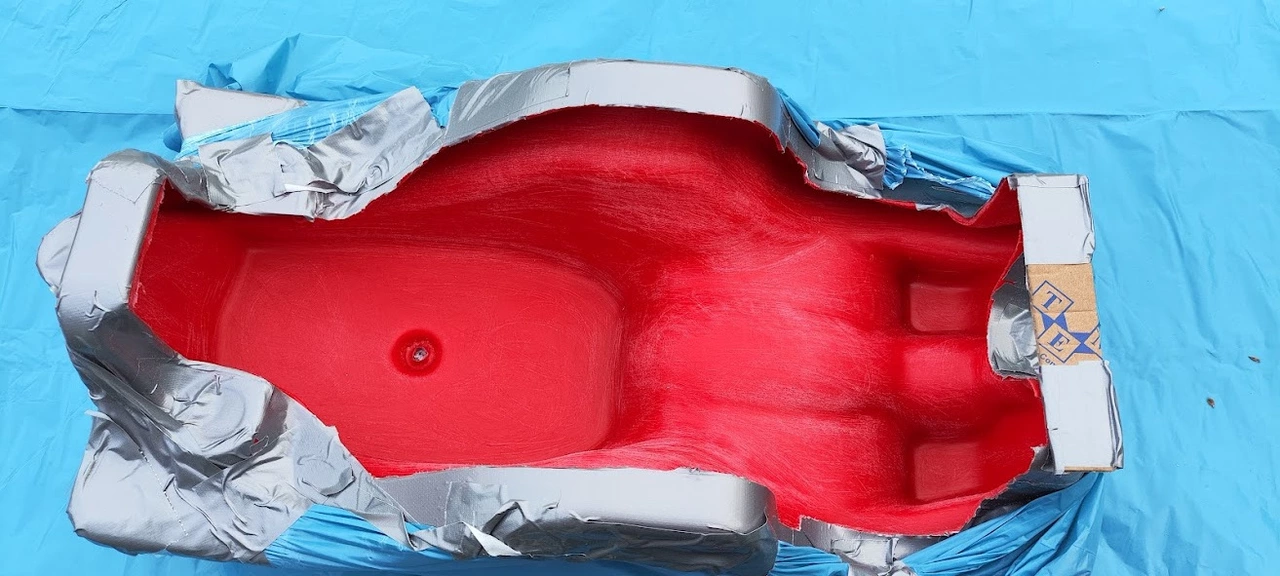Motorized Bobbycar
I motorized a soapbox-style toy car with an electric drive, equipping it with two brushless DC motors. To accommodate the significantly increased top speed, I replaced most of the original chassis. I also designed a custom instrument cluster.
Steering
I upgraded the original solid plastic "tires" with air-filled tires designed for electric longboards. The tires were mounted on alloy rims.
The steering knuckles were machined from stainless steel and welded together. I incorporated a 5° caster angle and an 8° kingpin inclination, with a dynamically adjustable toe angle
to improve handling. The steering column is mounted using flange bearings and can be adjusted along the vehicle's longitudinal axis to adjust for the plastic body.
Drive
The wheels are driven using timing belts. I machined motor mounting brackets with eccentric cams for adjusting belt tension. The rear axle was machined from stainless steel. braking
also works through the electric motors.
Battery
I built a custom Li-Ion battery pack for this project from high current 18650 cells. The battery pack is capable of delivering surge currents exceeding 150A at 11s.
A BMS (Battery Management System) ensures proper charge balancing and battery health. The cells were spot-welded, and the enclosure was 3D-printed. I also printed TPU shock absorbers
for mechanically isolating the battery from the rigid mount axles.
The battery is centrally mounted to maintain weight distribution. This setup keeps the center of gravity close to the vehicles center point. Fitting the battery into the chassis was a challenge
and a key reason for designing a custom pack.
Controls
I designed custom controls for the vehicle. Two separate steering wheel levers manage braking and throttle. A custom control board interfaces with all controls, the LCD display, and the motor controller via CAN bus communication.
A graphical LCD panel displays odometry data. I implemented the UI using the LVGL library. The lever mechanism was machined from aluminum, the levers were made from fiber glass.
A magnetic connector functions as a engine cutout switch.
Chassis
The vehicle is mounted on a 8mm aluminum plate to provide some rigidity for the plastic body.
I modified the original vehicle by removing its bottom section using an angle grinder. To reinforce the structure, I stabilized it using high-density rigid foam.
